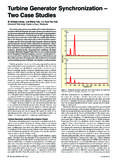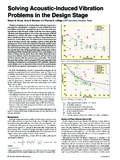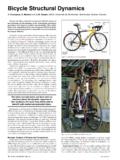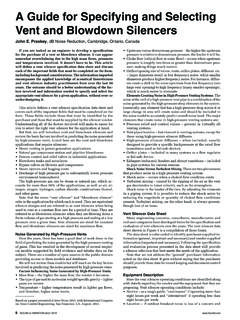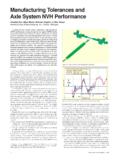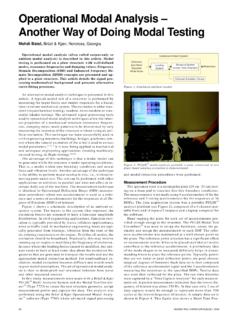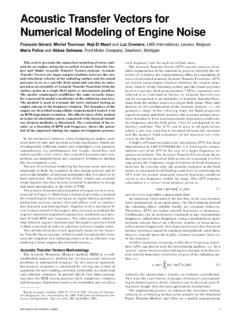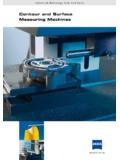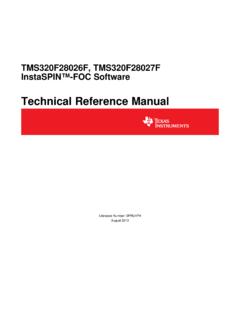Transcription of Forty-Eight Case Histories of Intriguing Machinery …
1 SOUND & vibration /JANUARY 2012 For 45 years, Sound & vibration magazine has been published. Technological developments over that time period have allowed machine analysts to obtain ever more sophisticated vibration data on troubled equipment. These technological improvements have greatly aided troubleshooting specialists. However the art of diagnosing equipment problems relies as much on understanding the equipment being analyzed as it does on the technology of the instruments being series of case Histories illustrates why a vibration special-ist needs to comprehend how machines operate as much as they need to understand the complex instrumentation used to do the diagnosis. These cases cover a span of 35 years, which parallels a good portion of the span of the time that S&V has been in business. Each case in itself could be an article, but to show the diversity of problems that can be encountered, they have been condensed as much as possible.
2 Forty-Eight case Histories are being represented, one for each year of publication of Sound & vibration plus a 1. 650-Megawatt TurbineIn the mid 1970s, a 650-megawatt turbine threw a piece of shroud off of its first-stage blades. To run the turbine until a new set of blades arrived, four blades under the damaged shroud area were removed. To keep the rotor in balance, four blades were removed on the opposite side of the blade group. The turbine came to speed without any issues, but as load was applied, the vibration grew worse as the load was increased. A vibration signature showed that all the vibration was at two times running reduce throttling losses, large turbines sequence their valve openings so that one valve opens, then a second and so on. This is done instead of opening all the valves a small amount, thereby incurring throttling of the problem determined that the vibration was the result of the two gaps in the first-stage blade group going in and out of the active steam arc.
3 The solution was to put the turbine into full arc operation, where all the valves open evenly and accept the throttling losses at low loads. When this was done, the 2 vibration disappeared, and it was possible to run the turbine until the new blades could be installed. This case illustrates why it is necessary to understand how a machine works to diagnose a problem and come up with a solution (see Figure 1). case 2. Power Plant Fan MotorA large fossil generating station had two new units with two-speed 5500 HP motors that drove the ID Fans. While at low speed, the vibration at 120 Hz was found to be very high on one of the motors. The data were collected with a newly acquired swept-filter analyzer. Further testing showed that all the fans had the same problem. Levels of in/sec were present on all the motors in the axial direction when they were operating at low speed. The manufacturer was contacted and admitted that there was a problem, and a motor of the same design had recently failed at another showed that the stator windings were resonant at Hz.
4 That combined with the winding sequencing of the low-speed coils caused the high vibration . Based on that knowledge, all four motors were sent back under warranty to the manufacturer on a planned and carefully orchestrated basis. This one case saved the utility enough money to fund its vibration monitoring program for many 3. Pump BearingsThree identical pumps sat side by side. One pump s bear-ings failed repeatedly. Pumps were swapped from the other two locations, but they al-ways failed when put in the troubled location. Prior to taking any vibration readings, the vibration analyst noticed that the pump shaft slowly shuttled back and forth in the axial direction. Based upon the analyst s knowledge of pumps, this observation meant that the pump was most likely dead-headed. A measurement of the discharge pressure proved that it was indeed operating with almost no flow. This condition occurred when the tank to which it was pumping was full and the pump was put in a recirculation the recirculation line showed that there was supposed to be a 3-inch orifice in the line.
5 The orifice tab said it was only 2 inches. When it was removed, the orifice actually only had a 1-inch hole. The pump bearings were failing due to the axial shut-tling caused by the pump operating with almost no flow because of the improper bypass line flow orifice. This case illustrates why it would be impossible to solve the problem by looking at failing bearings with a spectrum analyzer. It was necessary in this case to understand what happens when a pump has insufficient 4. Pump Motor VibrationThree pumps sat beside one another on a concrete foundation. Two of the motors on the pumps operated with low levels of vibra-tion. The third motor had high levels of 120-Hz vibration . As with the previous case , when the good motors were put in the third location, the 120-Hz vibration was resonance test was performed, and it was discovered that, where the vibration levels were high, the foundation had a 120-Hz vertical resonance that was not present under the other two motors.
6 When the foundation under the bad location was jack hammered out, it was discovered that the reinforcing bar had not been welded as designed. The last two case Histories show that even though things may appear the same from the outside, there can be unseen problems that can affect either the process or the dynamic 5. Cracked Hub of FanFor several months the vibration on an exhaust fan had been changing. The fan could be balanced, but in a short time, the Forty-Eight case Histories of Intriguing Machinery ProblemsNelson Baxter, ABM Technical Services, Mooresville, IndianaFigure 1. Steam admission to wheel; partial arc (left), gaps go in and out; full arc right, gaps are always in steam 2. Melted 500 megawatt genera-tor phase 45TH ANNIVERSARY ISSUE 37high levels of vibration would return. The fan was examined for uneven dirt build-up on the blades but was always found to be clean. Amplitude and phase readings were monitored and found to vary with time.
7 It was concluded that the fan was loose on its shaft, so the fan wheel was replaced, which solved the problem. The fan wheel was sent out to the scrap area, and several weeks later, following exposure to rain and weather, cracks were found in the hub by the presence of rust bleeding from the case provided a valuable lesson that if the vibration on a fan varies with time and there is no apparent cause, then it is advis-able to perform a dye-penetrant check on the fan wheel and 6. 500-MW Generator FailureDuring the early 1970s, a 500-MW generator failed catastrophi-cally. It had an internal short that resulted in a phase-to-phase short. The generator stopped so suddenly that it sheared off 24, bolts in the coupling between the generator and the turbine. The problem was traced to the phase leads resonance shifting to 120 Hz as the generator aged. This problem resulted in the annual testing of the phase leads for the unit that had the failure and also on its sister of the key lessons learned during many hours of testing these generators was that for electrical components, the stiffness of the insulating materials is affected significantly by tempera-ture.
8 For instance, if a phase lead tested as acceptable at room temperature, it might experience a 10-15 Hz drop when it was at operating temperature, thereby being unacceptable in the loaded state. The extent of this effect was discovered by accident when the windows to the turbine building were left open on a cold night. It was discovered that the natural frequency results on the phase leads were significantly different when the leads were cold versus at room lesson to learn here is to always be observant. The natural frequency of a vertical pump made of steel will not vary much whether the surrounding temperature is zero or 100 degrees, but electrical components that are covered with insulation can change (see Figures 2 and 3). case 7. Nuclear Plant Control-Rod Cooling FanWhile consulting for a nuclear power plant, a call was received that a control-rod cooling fan had vibration levels that had in-creased since its last outage.
9 Examining the fan found no reason for the increase in the running-speed vibration . The fan wheel was clean, the bearings were in good condition, the coupling was OK, the hold-down bolts were tight, and there was no sign that any balance weights had been thrown. Despite no changes in the fan, the amplitude had more than was a case where it was advantageous to have knowledge in three areas, nuclear engineering, organic chemistry and dynamics. The first question that was asked was if the fan was on isolators, and the answer was yes. The second question was whether the isolators were springs or rubber. They were rubber. Based on that knowledge, the problem was identified and quickly solved. The rubber isolators were exposed to gamma and neutron radiation from the reactor. This radiation destroyed the covalent bonds of the carbon-compound-based isolators, making them harder. This changed the tuning of the isolators, moving the isolated natural frequency (verified by an impact test) close to the running speed.
10 On the response curve, the system went from the isolation region to the amplification region. New isolators were installed, and the vibration amplitudes returned to their historical this case , the instrumentation was used to confirm that the natural frequency of the isolated system had changed. However, the key to identifying the cause of the problem was to have an understanding of the nuclear environment and the chemistry of the isolators along with a knowledge of the nature of the dynamic response curve. Another important point to be learned from this case is that isolators are maintenance items. They do not last forever and any changes alter the dynamic response of the system (see Figure 4). case 8. Steel Plant Galvanization LineA steel mill in the central part of the United States experienced a vibration problem on its galvanization line. The entire 300-foot-long line would vibrate at 7 Hz. Initial tests indicated that this frequency was nine times the bridle-roll speed, but further evalu-ation using higher resolution data and a tach pulse as a speed reference showed that the 7-Hz frequency was not an exact match to a multiple of the large bridle-roll speed.

